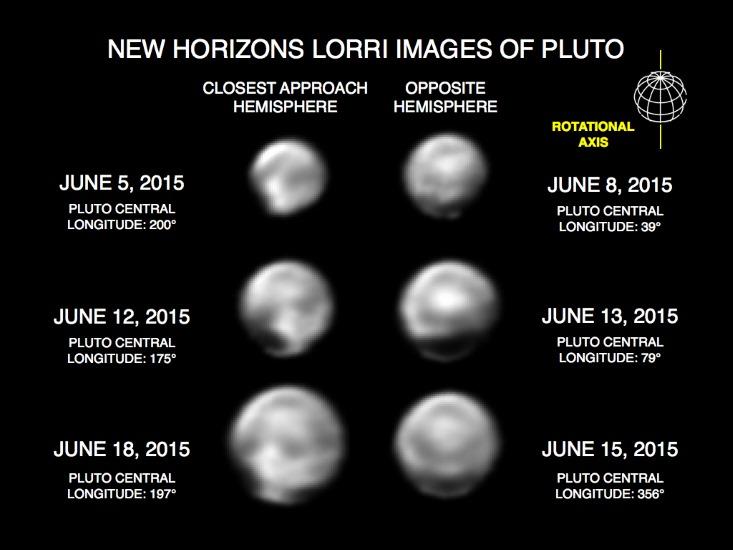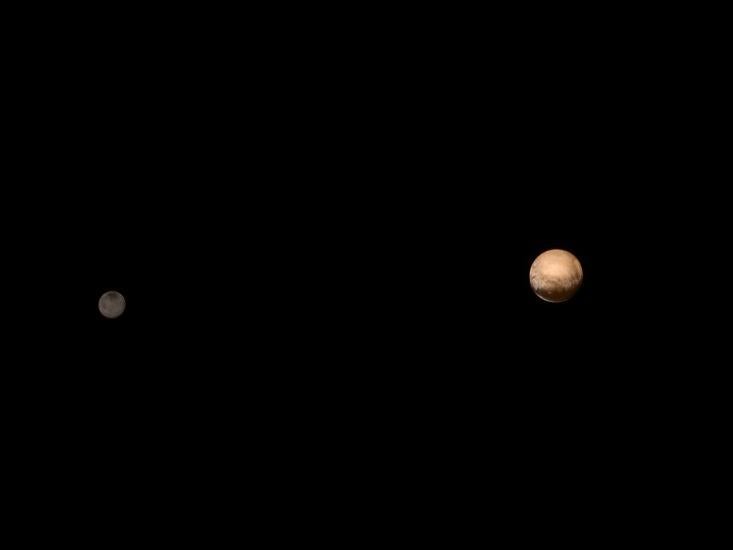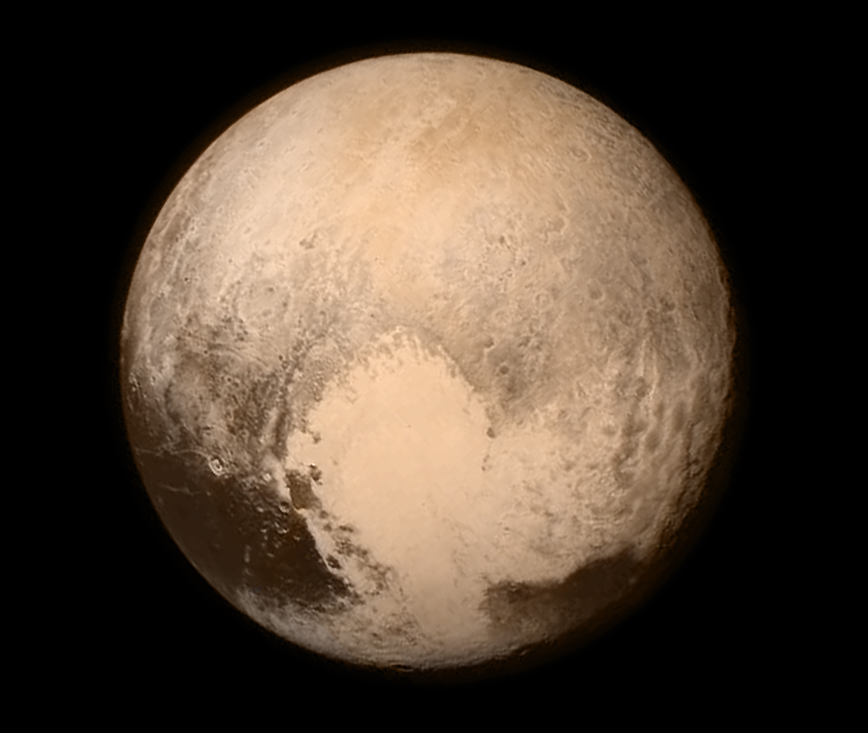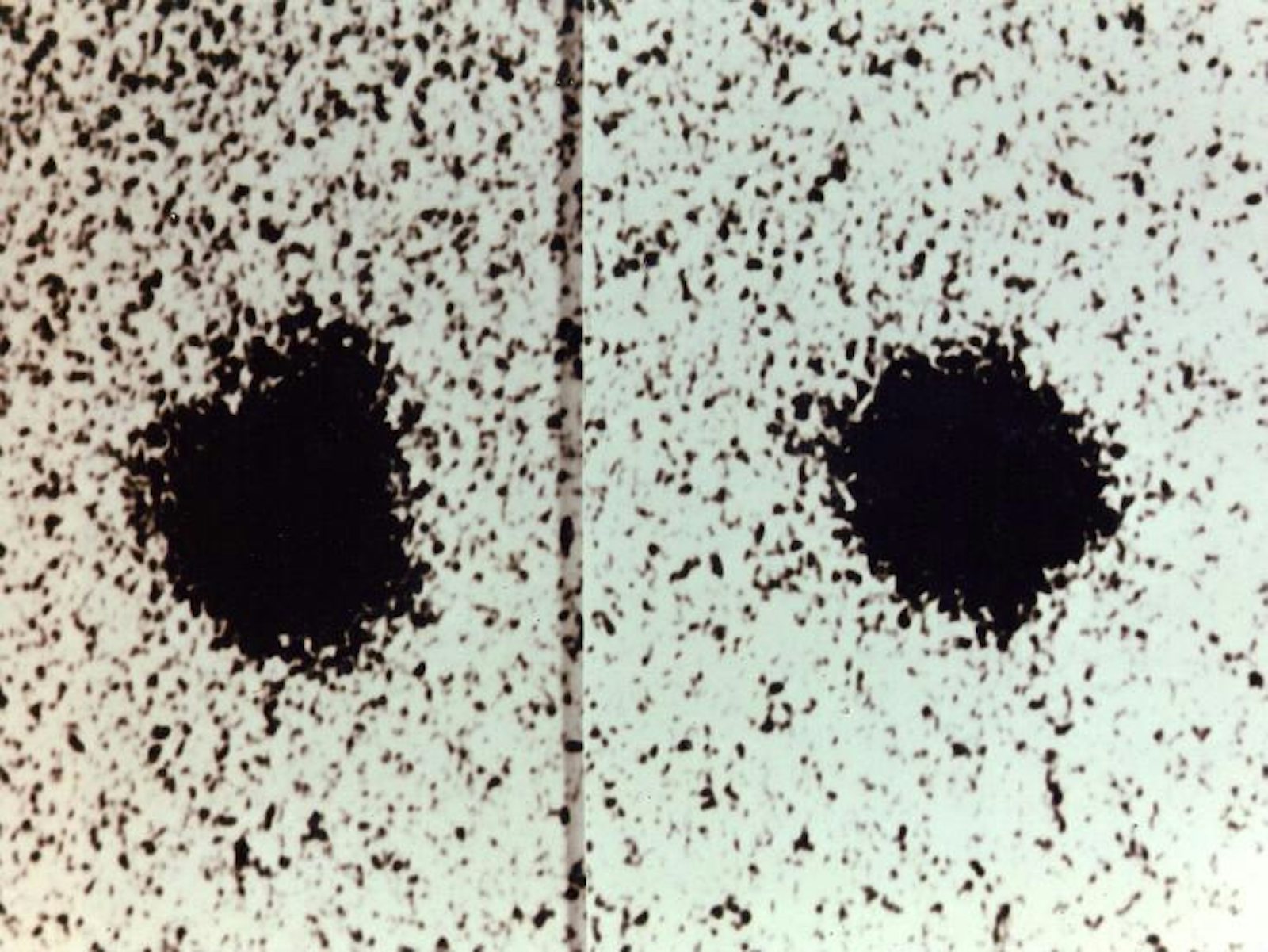Before I could string full sentences together, I used to wander outside past my bedtime. I would push open the sliding glass door and immediately look up, searching for stars sprinkled beyond the silhouetted trees. At the time, I couldn’t even begin to comprehend what I was seeing. Instead, each beacon of light represented a mystery, a final frontier in a vast, unknown universe.
Today, two-plus decades of personal discovery leaning on centuries of scientific discovery have given me much greater insight into the night sky. But plenty of mysteries still stand. You could say that most of the universe remains dark to us. And that includes some of our own backyard.
Pluto—that cold, small and lonely dwarf planet 4.7 billion miles away—is still a single dot in a vast, starry sky, only dimly visible through even our best telescopes. We know little about it, save that it’s very different from what we know well: completely unlike the rocky inner planets and outer gas and ice giants of the Solar System. It has held onto its secrets for nearly a century. But that is about to change.
After a nearly-10-year journey, NASA’s New Horizons spacecraft came face to face with the icy world this morning (July 14, 2015) at 7:50 a.m. EST. Without the power to enter orbit around Pluto let alone slow down, it will zip past the dwarf planet as quickly as it came, before zooming into the further reaches of the solar system. The long-awaited flyby will gives us a good look at the last of the nine nearby bodies that we have—at least during some point in history—called planets.
A Star Is Un-Born
Because of its great distance, tiny size, and dim surface, Pluto has always been extremely challenging to image—which is also why it was only found within the past century. One late afternoon in February 1930, Clyde Tombaugh, a young researcher working under Vesto Slipher, was evaluating two photographic plates when he noticed that one pale dot just refused stay put. It was clearly arching across the sky like a planet. (For more on the story behind Pluto’s discovery, see Corey Powell’s excellent post at Discover.)
Pluto Has Company
For the next 50 years, Pluto remained a lonely speck barely visible even to the largest ground-based telescopes. Then in 1978, using the Kaj Strand Telescope at the U.S. Naval Observatory in Arizona, James Christy spotted what appeared to be a bulge on the side of icy dwarf planet. It turned out to be a moon, soon named Charon. Compared to most moons, Charon is surprisingly hefty: It’s only one-eighth as massive as Pluto. In contrast, Earth is 81 times as massive as our Moon. It also orbits quite closely to Pluto, which is how it got mistaken for a bulge.
Pics… in… Space!
With the launch of the Hubble Space Telescope, researchers could finally see Pluto without interference from the Earth’s atmosphere. In 1996 it revealed the first significant details of Pluto’s surface. These images showed that Pluto has more large-scale contrast than any planet in the Solar System besides Earth.
When New Horizons was designed and built, Charon was the only known moon of Pluto. Then, a year before launch, Hubble revealed two smaller moons orbiting further out: Nix (named after the Greek goddess of light) and Hydra (named after the many-headed serpent of Greek mythology).
Still, Hubble wasn’t done yet: The craft also helped spot two more moons: Kerberos in 2011 and Styx in 2012. New Horizons wasn’t close enough to see Pluto’s full family until May 12, 2015, over nine years into its mission.
Finally, the Approach to Pluto
In fact, most of New Horizons’s mission was eerily quiet. Pluto was a faint dot in the satellite’s camera—just a few pixels wide—until the last several weeks. Then, as New Horizon closed in on the icy planet at more than 14 kilometers per second, the image of Pluto grew rapidly, allowing details to emerge.

Astronomers once again noticed large-scale features on Pluto’s surface over a month ago. A continuous swath of dark terrain wraps around Pluto’s equatorial region before breaking up into a series of regularly spaced spots. Some features are so dark, they almost make the dwarf planet appear lumpy instead of spherical. “It’s a real puzzle,” said Alan Stern, the mission’s principal investigator. “We don’t know what the spots are.”
More recent images are giving us a better view of these bold features found around the dwarf planet’s belly. There’s a blob that NASA scientists dubbed “the whale,” for example—the dark region to the left that’s roughly 1,860 miles across. Just above the whale’s tail is a circular region that astronomers have dubbed “the donut.” It’s likely an impact crater, but astronomers are holding off that interpretation until they get a closer look. To the right of the whale’s head is a bright spot, which is likely a reflective frost made of methane, nitrogen, or carbon monoxide. Then, even farther to the right, is a series of mysterious dark spots.
Accidental Neighbors?

On July 8, images added a splash of color. Pluto, a rusty red, stands in stark contrast with Charon, a pewter gray. The two objects appear to be more like strangers than close relatives. Pluto has a significant atmosphere while Charon does not. Pluto is also covered in exotic ices like frozen nitrogen, methane, and carbon monoxide, while Charon is covered in frozen water and ammonia compounds.
Then on July 13, New Horizons snapped one last picture before going off the radar (in order to concentrate fully on the mission at hand, New Horizons will not check in with mission operators for 22 hours). But it definitely left the control room with something to marvel at. The image is 1,000 times the resolution of anything from Hubble. It’s oriented with Pluto’s north pole at the top. The dark regions point the way toward its equator.
Most curious of all might be the bright region—dubbed “the heart”—which appears to be remarkably smooth. So many light and dark patches suggest that internal activity has played a role on Pluto in the past and quite possibly the present, noted Alan Stern in a press briefing this morning.

The tiny spacecraft should turn its antenna back toward Earth by 5 p.m. EST today (July 14, 2015). In coming weeks and months, we’ll see more and better visual data from the Pluto system. (It will take New Horizons a full year to beam its complete data back to Earth.) Soon we will have completed the inventory of all classical planets. We will check one last box, never again to see the surface of any classical planet for the first time.
But scrutinizing Pluto’s system is only half of New Horizons’s mission. Soon after passing the erstwhile ninth planet, the spacecraft will fire its thrusters once more and set itself on a course to fly past one or possibly two Kuiper belt objects by January 2019. These objects are thought to be undisturbed since the formation of our solar system four and a half billion years ago, giving us a window back to a time when the planets were just being born.






























